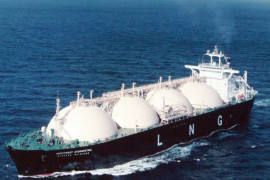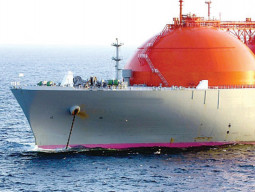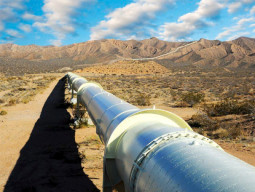
According to sources, the Ministry of Ports and Shipping said the PQA, in a letter, pointed out that the FSRU loaded with LNG cargo did not meet the criteria defined under the LNG Policy 2011 and was also not in line with recommendations of the Society of International Gas Tanker and Terminal Operators (SIGTTO).
The implementation agreement with ETPL calls for only bringing the LNG carriers that respect existing parameters of the port and comply with SIGTTO recommendations as mandated under the LNG policy, the letter says.
The Full Mission Bridge Simulation study carried by PQA pilots indicates that the FSRU or LNG carrier could be berthed under controlled conditions while not complying with SIGTTO recommendations, it says.
Still, the PQA needs explicit clearance from the Pakistan government for failure to comply with the LNG policy for berthing of the FSRU. It has, therefore, sought urgent instruction from the government for berthing of the vessel in order to avoid expensive delay.
In the simulation study, the PQA says, both large and small LNG carriers including FSRU were simulated in light and tough conditions, which called for paying urgent attention to some points relating to the guidelines set by SIGTTO and the LNG policy.
First, the channel should be about five times the beam of LNG cargo vessel/FSRU. Though the width of the existing navigational channel is about 200 metres, the beam of the large LNG vessel is 50 metres and that of FSRU is 43.4 metres. Thus, the channel width needs to be approximately 250 metres or 217 metres.
Second, the turning circle should have a minimum diameter twice the overall length of the largest ship, where the current effect is minimal. Whereas turning circles are located in areas of the current, diameters should be increased by the anticipated drift.
At present, the turning circle is about 600 metres. For a large vessel with a length of 315 metres, the turning circle should be minimum 630 metres. PQA says using the turning circle for anchoring purpose will block other port traffic.
In view of the safety aspects and especially the PQA position that berthing of the FSRU/LNG carrier can be undertaken under controlled conditions, the port authority says it may be allowed to either (i) follow the SIGTTO standards provided in the LNG Policy 2011 or (ii) as considered appropriate by the port authority.
The Ministry of Ports and Shipping says dimensions of all the vessels proposed by Qatargas so far and the dimensions of the FSRU, if brought in to navigate in the Port Qasim channel, will exceed the limitations of waterways and approaches to the terminal that are recommended by SIGTTO, which is 250 metres, whereas the width of the existing channel is 200 metres.
It is of the view that capital and maintenance dredging is required in the channel as well as in the turning basin to accommodate these vessels.
Published in The Express Tribune, April 23rd, 2015.
Like Business on Facebook, follow @TribuneBiz on Twitter to stay informed and join in the conversation.



































1714129906-0/Clint-Eastwood-(1)1714129906-0-270x192.webp)






COMMENTS (2)
Comments are moderated and generally will be posted if they are on-topic and not abusive.
For more information, please see our Comments FAQ